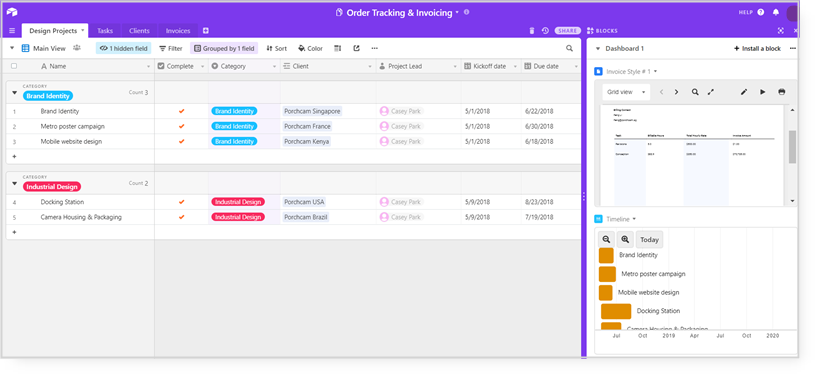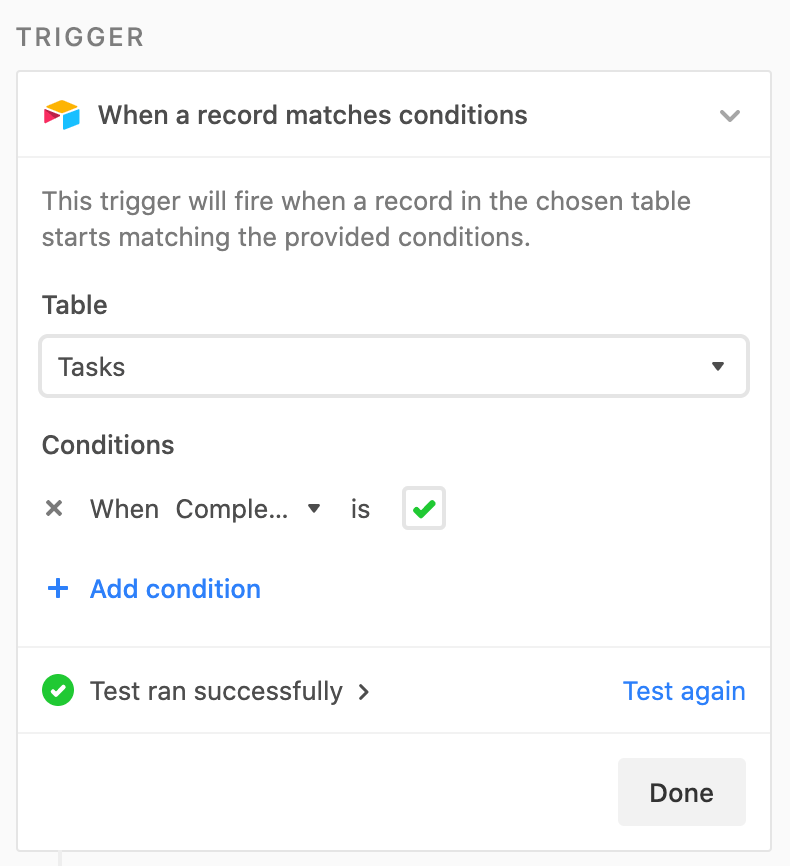

- Airtable scripting how to#
- Airtable scripting manual#
- Airtable scripting software#
- Airtable scripting code#
In that base, the team tracks which pull requests have been merged to the main branch, a central repository. The QE group uses an Airtable base to track things like pull requests, or small changes to the software. Examples of testing tasks include finding bugs or anomalies in our product, ensuring the product is compliant with functional and non-functional requirements, and getting bugs resolved by developers.
Airtable scripting code#
Project 1: Automating task assignmentĭuring the SDLC, after engineers complete writing code, the quality engineers on the team are assigned to test code changes. Once testing is complete, the new version of the code is released to our customers. Our engineering teams use the agile development method, with two weeks of cross-functional team members working and iterating on developing and testing code.
Airtable scripting software#
One of the use cases is to manage our software product development lifecycle (SDLC). Our group uses Airtable for several internal workflows. We are a remote-first team, meeting on a quarterly basis in Airtable’s Mountain View office for in-person collaboration and team bonding. The Quality Engineering group is close to 27 engineers working from various parts of the U.S.
Airtable scripting manual#
So we made an effort to automate those manual steps, which resulted in a dramatic streamlining of task assignments and a savings of 70% in Quality Engineering team bandwidth for every new software release. Or maybe you want to learn Airtable scripting but you’ve got a pressing deadline that you just need to hit.The Quality Engineering Team at Airtable.īut a few months back, we realized that our process involved many manual steps. You might not have the time or the in-house resource to bring your Airtable environment up to scratch. This is great when you are starting out, but once the table is created you can’t import more data to it - it is only for table creation.Īlongside the introduction of scripts, one of the big leaps forward in Airtable functionality in 2020 was the Automations feature. When creating a table you can use the Import data functionality. Importing a CSV file using Airtable scriptingĪirtable has a couple of ways to import data from an external file - a CSV file or spreadsheet for example. Setting the scene: We have a set of records - in this case, company names - and we want to weed out the duplicates and find a unique set of names (by implication, we’re going to end up with the “first” occurrence of any company name and discard second and subsequent occurrences). But what is a webhook? Let’s use a real life scenario to illustrate. If you’ve been hanging around SaaS apps and their APIs over the last few years, you’ve probably heard the term “webhook” being banded about by those smart developer types 😉. You don’t need to have anything else in your kitbag to make it work. A few tables and views, a couple of forms, maybe an automation or two and, of course, some scripts and you’re all set. Why are there many ways to do the same thing and why doesn’t everyone do it the same way?įor many Airtable use cases, Airtable is the only thing you need. If you’re a new coder and looking at scripts written by others, some of the syntax and coding conventions can be confusing.
Airtable scripting how to#
Interested in learning how to script with Airtable?


In this post, we’re going to go in the opposite direction and POST some Airtable data to an API. In part 1 we looked at how to get data from an API and create records in Airtable using a GET request. But for a little more control and configurability (and to continue our API series), in this post we’re going to use the Airtable scripting block to communicate directly with SendGrid. Sending an email using SendGrid (APIs Part 3)Īirtable has a built-in SendGrid app and this is great for sending emails to your users/customers/whatever.


 0 kommentar(er)
0 kommentar(er)
